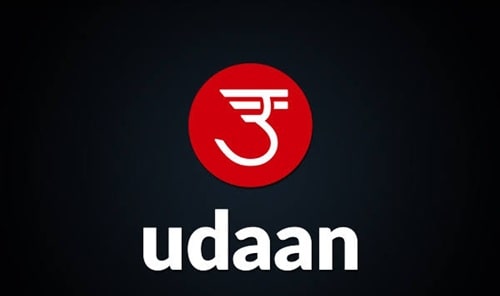Patanjali is one of the most popular FMCG brands in Indian that manufactures and sells wellness products. The brand was co-founded by Baba Ramdev and Acharya Balakrishna with the focus on selling daily goods using strong Ayurvedic roots and home-grown natural products. Over the years, the Patanjali brand has expanded into food, personal care, home care, edible oils, nutraceuticals, and various other segments.
Patanjali gained all this growth with its natural and Ayurvedic brand appeal among customers. Following these key points, customers also love the lower pricing, rural reach, and aggressive distribution. Baba Ramdev himself is a famous name in India, and his image has helped in the promotion of the brand. The brand uses both traditional retail outlets and modern channels like E-commerce and quick commerce to reach customers across urban and rural India.

How is the Patanjali Business Model Structured?
Patanjali’s business model is diversified and operates in the FMCG, Wellness, and Food categories. The key pillars of their business are edible oils and foods, home and personal care, ayurvedic health products and nutraceuticals, and wellness services. The product manufacturing is largely in-house and via its owned facilities, which helps in controlling the entire manufacturing process in the retail chain.
Another part of Patanjali’s business structure is the distribution and pricing strategy, which helps in getting an edge over the competition. There are traditional general stores, large retail chains, e-commerce platforms, rural markets and e-commerce platforms. With strong traction in all the regions, Patanjali’s TV commercial helps in targeting a wider audience. Also, Patanjali has always used marketing to make people rethink their choice when they buy from other brands, claiming that other brands sell poor-quality products.
| Company/Brand | Patanjali (including Patanjali Foods & Patanjali Ayurved) |
| Establishment Year | ~2006 (Patanjali Ayurved was founded around that time) |
| Headquarters | Haridwar, Uttarakhand, India |
| Founder/Owner | Baba Ramdev & Acharya Balkrishna |
| Industry | FMCG, Food & Edible Oils, Ayurvedic & Herbal Products, Personal Care, Wellness |
| Net Worth (2025) | ~ ₹ 650-680 billion (for Patanjali Foods) as of late 2025 |
| Total Revenue 2025 | In Q4 FY25, Patanjali Foods reported revenue of ₹ 9,692.21 crore in that quarter. |
How Does Patanjali Make Money?
Patanjali has many revenue streams that offer great ROI and help the other segments grow as well. The main revenue streams and their strategies are:
1. Sale of FMCG Productions and Edible Oils
A large portion of Patanjali’s revenue comes from the sale of FMCG products like oils, ghee, Vanaspati, biscuits, pulses, protein bars, and packaged goods. The edible oil category makes around three-fourths of its total revenue. There are other products alongside the oils, like juices, snacks, and ayurvedic goods under the food segment, which contribute to the overall growth of the company.
2. Home and Personal Care
There are many products like soaps, shampoos, toothpaste, skin care, herbal medicines & supplements, wellness tonics, etc., which often have lower revenue, but they bring in sales. Though margins here may be lower or more volatile due to raw material costs, they help diversify. These leverage Patanjali’s Ayurveda positioning (natural, herbal) and consumer trust.
3. Distribution and Rural Expansion
Distribution strategy plays the most important role in reaching a mass audience, and Patanjali has always pushed toward large volume sales. This became possible through extensive distribution in urban and rural areas. Over the years, rural demands have lately been a major driving factor in growth compared to urban areas. Traditional trade and small retailers, e-commerce, and quick commerce bring extra revenue.
4. Pricing Strategy
Patanjali is a giant company in the FMCG market, and people trust the brand for its ayurvedic roots. When Patanjali offers something for affordable pricing as compared to other brands, most people switch brands immediately due to overall trust. Edible oil has been a top seller for Patanjali, even if the margins are less than 5% in the edible oil category.
5. Other Sources
Patanjali Ayurved also earns from “other income” lines, which include financial income, proceeds from some business transfers or offers, etc. For example, in FY24, Patanjali Ayurved’s “other income” jumped significantly (including profit from share offers or business transfers), which helped its overall profit.
Financial Performance
In Q4 FY25, Patanjali Foods achieved revenue of ₹ 9,692.21 crore, with EBITDA of ₹ 568.88 crore (operating margin ~ 5.87%). Net profit for that quarter jumped (year-on-year) to ~ ₹ 359 crore, up ~ 74% YoY. The Edible Oils segment, which forms the majority of revenue, showed strong growth (~20-22%) in turnover. Other FMCG or branded consumer goods segments showed some softness.
What’s New in 2025?
Patanjali completed full integration of its Home & Personal Care (HPC) segment into Patanjali Foods by November 2024. This means that HPC products are now part of the same corporate entity as its edible oils and food business. This helps unify manufacturing, distribution, branding, and cost structure.



